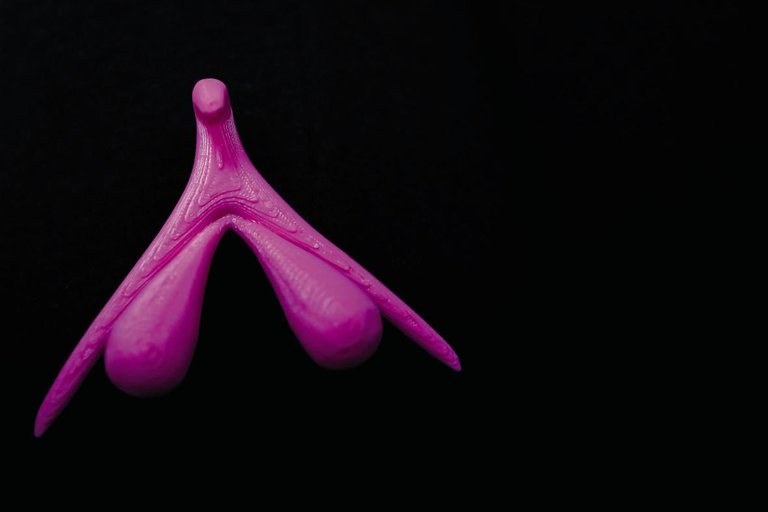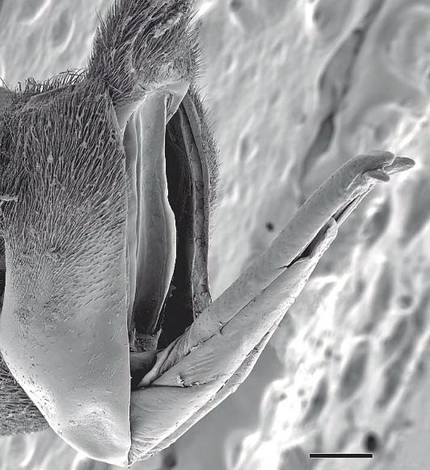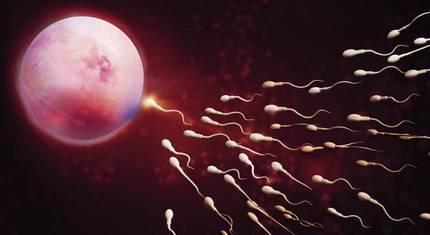Clitoris above the myth

The exercise is known: ask people to draw male and female human geniuses and see the result. As you do with the students of the school or the university, with the adults of both sexes, the result is always the same: apart from the artistic endowments of the draftsman, the penises are much more realistic than the fins.
It is no wonder that science has investigated much more and better male sex organs than women. Proof of this is a 2014 study on the evolution of sexual organs. According to him, in the previous 25 years 364 studies were published on the evolution of sexual organs, of which almost half (49%) only studied the organs, 44% of the cases were those of males and females and only 8% of the cases were studied.
The study confirmed that scientists who investigated the evolution of the genitals had discarded the females again and again. This exclusion, moreover, was not something of the past, since the trend was more evident from the year 2000, and had nothing to do with the gender of the researchers: even when the authors were women, even though the evolution of the organs was more attentive than that of the females.
To clarify why, the authors analyzed several hypotheses. For example, that penises are easier than research wagons because they are out. However, this reason seemed to them unfounded, since with current techniques there is no inconvenience to study the structure of soft tissues within the body.
Perhaps more attractive
However, it is undeniable that the genitals of males are evolutionarily attractive. All kinds of penises are known: spiny, ramified, hooks, spirally shaped... And will the genitals of the females not be studied?
Well, the authors have shown that the vaginas have evolved like penises, so they are as evident and exceptional as them, and perhaps more interesting, to the extent that they are more unknown.

For example, morphology of wagons of some insects is adapted to store sperm from several males in separate warehouses. They can control the fertilization of the egg. The female shoemaker (Gerris gracilicornis), on the other hand, has a door that closes and opens the vagina and serves from it to avoid the involuntary little ones.
Therefore, the authors of the study called for a change of sight and made a note: “Research that studies a single sex has a great risk of investigating a single aspect of a very complex equation and a greater tendency to misunderstand the complex coevolutionary dynamics that can occur among the sexes.”
Cause ignorance of knowledge
This study on genital evolution is entitled to a question: “Genital evolution: Why are females still less investigated?” “Still” denounces that in the past females have investigated less than males. That is: the history of science shows that the woman in general and the sexual organs in particular have been worked from an androcentric and falocentric point of view. Today this vision continues to prevail; women, their body, their genitals and their sexuality remain unknown.
Nancy Tuana, a feminist philosopher, has investigated the causes behind it. In the essay “The Speculus of Ignorance: the Women’s Health Movement and the Epistemiology of Ignorance” (2006), he defines ignorance as a void in knowledge, which is “what we still do not know”. But not knowing is not always so simple. On the contrary, he proposes to analyze what is based on ignorance; moreover, why, sometimes, ignorance is intentionally sought. To do this, he puts in power the focus, ignorance and knowledge in his interaction with him, understanding better the expressions of ignorance.
Tuana distinguishes several types of ignorance. One of them is to know that it is unknown but that no matter. This can be explained for different reasons, such as security reasons, or for not being able to obtain economic benefits from that knowledge.
Set as an example the male contraceptive pill. The laboratories rule out investigating the development of the male pill, since it is widespread that contraceptive hormones can cause libido loss. Therefore, they foresee a scant commercial success of this pill. They prefer to invest in pills for women, as they consider sure that women will not worry so much about the fall of libido.
In this type of ignorance classifies the ignorance of female ejaculation and menopause, or of lesbian and older sexuality.

The reason why the clitoris is unknown is another. Taun says the clitoris is not known because they do not know it is unknown. In the historical illustrations of medicine it appears as a sketch as a button, as well as in the times in which the penises and testicles were drawn in all detail, both from the outside and from the inside.
Taun believes that at the core of this indifference is the priority in reproduction: the clitoris, not considering it necessary for reproduction, is negligible. Hence, both diffuse and breaking clitoris appear, but finely and entirely parts directly related to reproduction, including internal ones such as the vagina, uterus, oviduos and ovaries.
The function of the clitoris is so evident in the pleasure that it has been considered that it only serves for it. It has become a myth.
Myth of fertilization
Myths, besides being a way of explaining the unknown, are a tool to strengthen and perpetuate that ignorance. A clear example of this is fertilisation. In fact, XX. Until the twentieth century, what scientific men knew about fertilization was based more on beliefs and beliefs than on evidence. In this way, the process of fertilization has been dressed as epic and, often, repeat the tale of the conqueror conquered: the sperm balance in search of the passive egg, only one gets in and all this.
Robert D. The biologist Martín has revealed the gaps in this myth. He calls it the myth of male sperm and, from the scientific point of view, warns that it is totally wrong. For example, the abundance of sperm is not necessarily a good sign, but quite the opposite: many of them are needed so much because they are defective. And they do not swim in search of the egg: they are driven by movements of the uterus and oviducts towards the egg.
Martín and other researchers have also explained the collateral damage to myth. One of the most prominent: the reproductive problems of men become taboos. Therefore, knowledge based on evidence-based benefits everyone, even men.

Clitoris as an iceberg
The myth of the clitoris, on the other hand, only serves for pleasure. In societies where the pleasure of women is considered discriminatory and even harmful, the clitoris has been forgotten and eradicated. And not only for religious norms, but also for medicine.
For example, clitoral extraction in intersex newborns has been quite common. When born with female and male genitals, doctors can't name girls or boys, and some solve the case by making a clitoridectomy, that is, cutting a structure that can be considered as a penis, so that it has the size of a clitoris.
Clitoridectomy may be due to other causes such as cancer, but the objective of intervention in intersex people has nothing to do with health, but with social norms on sex and gender, and only seeks the adaptation of the newborn to sex and binary gender. Thus, according to the publication on the clitoris of the Equality Unit of the University of Vigo, medical practices such as cllitoridectomy confirm and innovate social norms, as well as ablations.
All this shows that the clitoris is still considered exclusionary and remains unknown to some doctors, although others are doing a great job to know and make it known.
It highlights, for example, the work of the urologist Hellen O’Conell. She first published all the anatomy of the clitoris. Article published in the journal Journal of Urology in 1998. Then they saw that what most considered clitoris was just the top of the iceberg. To make a description as precise and complete as possible, he used the imagery by magnetic resonance and dissections of the dead, and in 2010 presented the three-dimensional image of an excited clitoris. Currently she continues to investigate female genital anatomy, without giving for good what historical books of anatomy say.
The demolition of myth
And the same has been done by Roy J. Researchers Levin with the function of the clitoris. Instead of considering that its only function is to create pleasure, it has analyzed the investigations carried out in recent years in this matter. Based on them and their research, the clitoris participates in reproduction.

He published his work at the end of 2019 in the journal Clinical Anatomy. The article begins with a mention of the Nobel Prize in Medicine, Albert Scent-Györgyi: “To see what all others have seen and to think what no one has thought.”
According to Levin, there are numerous researches that explain the protagonism of the clitoris in excitation, not to mention its reproductive function. That is, they limit themselves to myth. But, according to studies, it is the same structures that intervene in the granting of pleasure that contribute to reproduction.
When describing intercourse, most research indicates that the vagina is stimulated and, perhaps, also the cervix. But the clitoris does not. And the minor lips and the main vestibular glands do not appear anywhere, they are invisible. Levin highlights in his article the importance of all these forgotten structures and affirms that the excitation of the clitoris influences the brain.
Its influence on the brain is, moreover, the same, both by stimulation of the clitoris and by intercourse. And it has a very broad influence: before orgasm it activates areas related to many functions such as heating, retribution, memory, intelligence, perception on oneself and social behavior, among others.
At the same time, changes occur in the genital tract to facilitate reproduction, increasing the vaginal circulation of blood, increasing the level of oxygen and temperature and improving lubrication. Changes also occur in the cervix, through which the sperm have more chances of reaching the egg and fertilizing it.
For all this, Levin warns that the extraction of the clitoris has consequences in reproduction. It distinguishes five types of cllitoridectomy: psychological, symbolic, freudian, ritual and medical. According to Levin, neither those who do them nor those who are against are aware that the elimination of clitoral stimulation prevents fertilisation.
In the end, Levin confirms that the two functions of the clitoris are fundamental, pleasing and helping reproduction. Therefore, the clitoris is above the myth.
Buletina
Bidali zure helbide elektronikoa eta jaso asteroko buletina zure sarrera-ontzian











